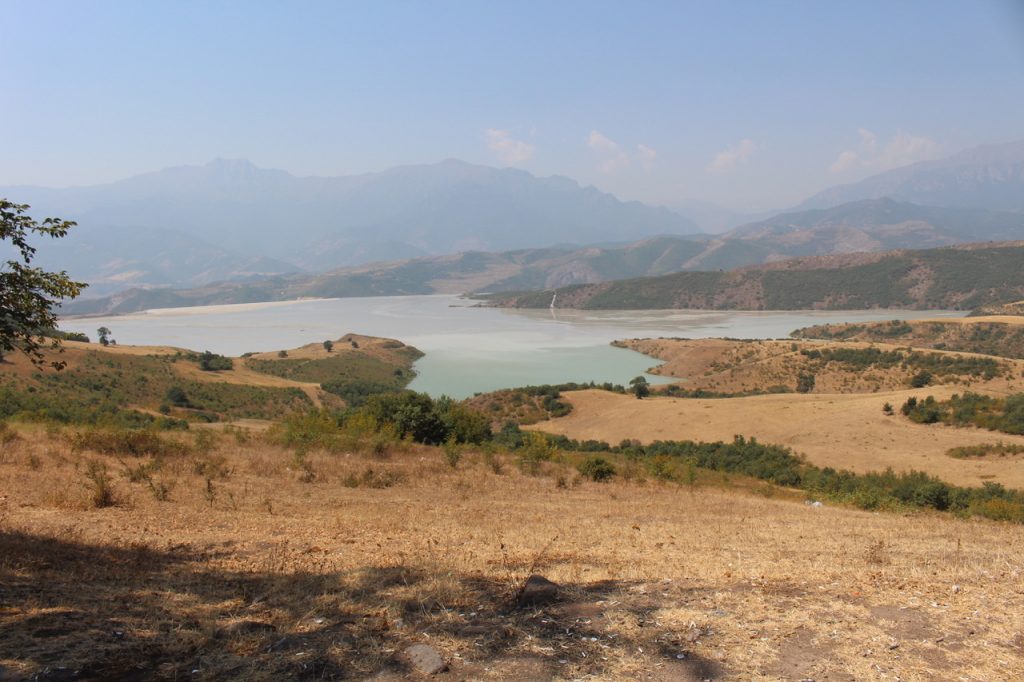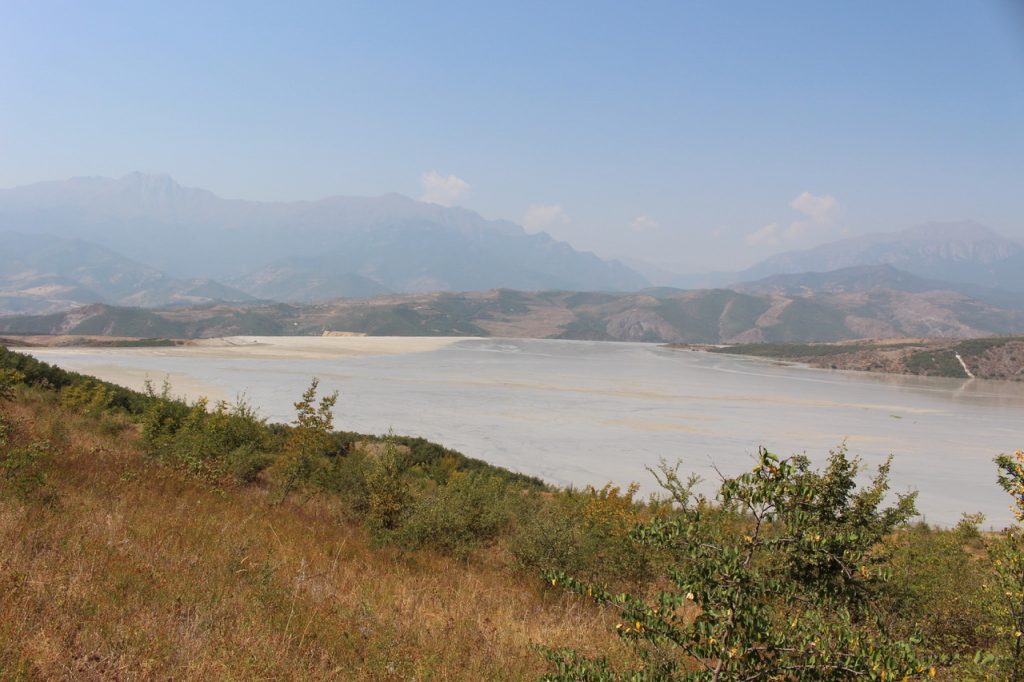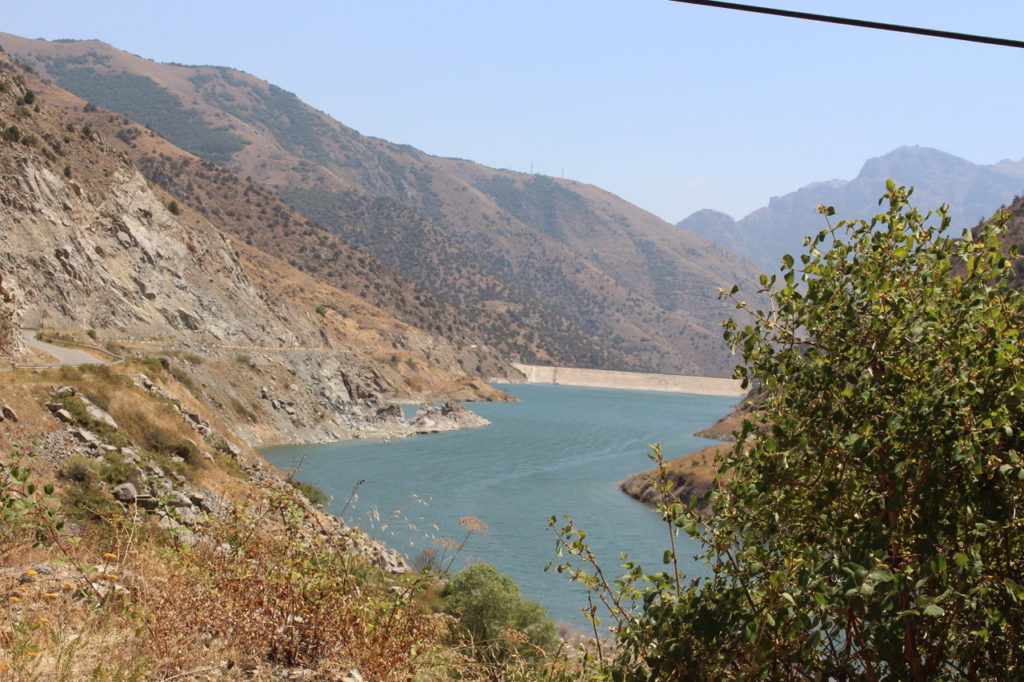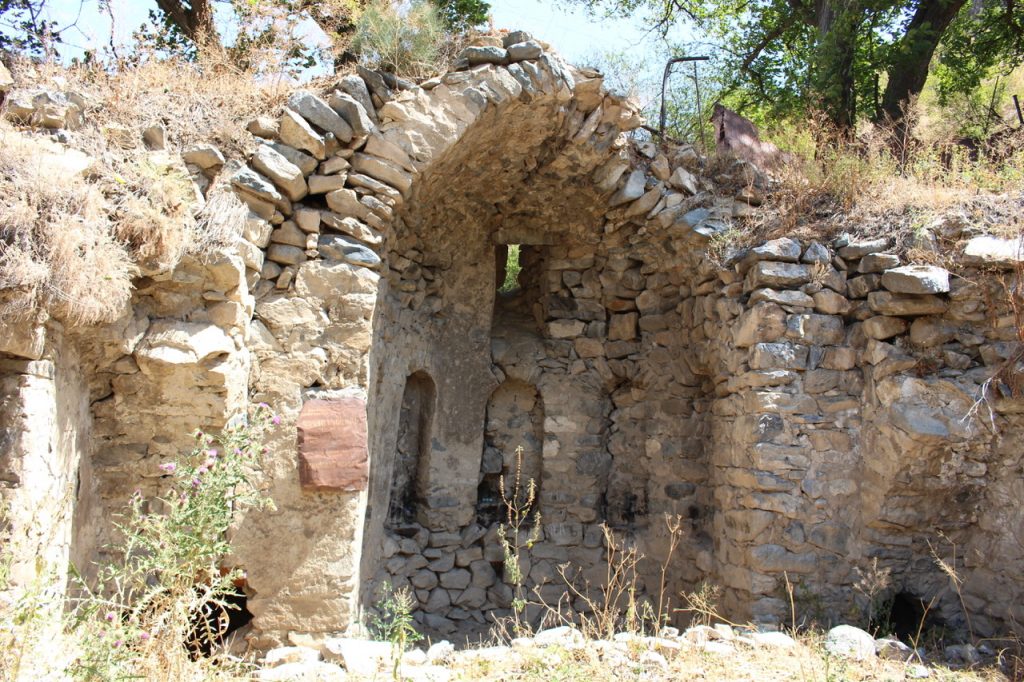By J. D.
A few years ago, my wife and I visited the monastery of Akhtala, a 10th-century fortified Armenian church with impressive murals. The church is situated on a hill above the Debet river, in Lori province, in Armenia’s north.
Near the river, there was a toxic pool of tailings from nearby copper mines. As my wife was photographing the church from below, a black SUV pulled up. Two burly, well-dressed men—hastaviz-es (“thick necks,” in local parlance)—exited the SUV and asked my wife if she was photographing the pool of mine waste.
“No,” she answered, “I’m photographing the church. Is it illegal to photograph the church?” “No,” they replied. They lingered for a few minutes, then left. They were concerned, of course, about negative publicity about the mining waste situated next to the Debet river.
Traveling to a neighboring village, we passed a valley with whitish-yellow mine waste dumped onto the valley slopes. I asked a villager if there was a plan to clean it up. “The mining company says they’ll plant trees, but who’d eat fruit from such trees?” he said. When I questioned locals about the quality of the drinking water, they were uneasy about the question and quite hesitatingly and unconvincingly said the water was OK.
From the hills above the Debet river valley, near the once bustling industrial city of Alaverdi, again in Lori province, we could clearly see smoke from the refinery in Alaverdi filling the valley. The company that owns the refinery, Valex, had posted signs on the lampposts in Alaverdi, reading “Valex Loves You,” yet smoke continued to fill the valley.
Valex also owns Base Metals, a subsidiary that has a factory in northern Artsakh along the shores of the Sarsang reservoir. During my first visit to that area a decade or two ago, the water of the Sarsang reservoir seemed normal. During a subsequent visit a few years ago, with the Base Metals plant operating above the reservoir, the water had a greenish tint to it. Upstream from the plant, on the Trtu (Tartar) river, which feeds the reservoir, the water was clear and appeared normal. The plant obviously was the reason for the green color of the water. What was in the water? I cannot say.
Also in northern Armenia, not far from the town of Odzun, is the village of Ardvi, a site of extraordinary beauty containing the tomb of Catholicos Hovhannes Odznetsi (Catholicos from 717 to 728). My wife and I spent hours admiring Ardvi’s beauty while being amazed at the agility of mountain goats scaling Ardvi’s seemingly unscalable cliffs. RFE/RL’s Armenian service reported that on June 26 villagers blocked the road to the village preventing a visit of mining officials from a newly registered mining company. The company wants to establish an open-pit goldmine nearby, and the villagers fear it will pollute the area and spoil the region’s beauty.
A few years ago, on our way to Kapan, in Syunik province in southern Armenia, as we descended from the mountains toward the city, there appeared a large “lake” in the valley to the right. This “lake” was a toxic dump of mine waste with a bluish green surface, but also reflected various other colors as well. A man and woman we met nearby both told us of children getting sick, and of difficult-to-breath, foul-smelling air periodically coming from the mining operation. Families, fearing for the health of their children, were leaving—for Yerevan, if work was available there, or, if not, for Russia. This year, in 2017, the greatly enlarged toxic lake consumed nearly the entire valley.
From Kapan, we headed towards Geghivank (Geghi church) in the village of Geghi. On the Geghi river there is a large dam holding back green-tinted water. We were told that this was from a copper mine. As we traveled along the road alongside the valley, another valley opened up toward our right. But this valley entrance was blocked by what appeared to be a large man-made berm or wall of earth and rocks. Presumably the valley beyond the wall is also intended to store mining waste, but I can’t be sure. Such structures appeared elsewhere as well.
Proceeding toward Meghri on the Armenia-Iranian border, we took a wrong turn in Kajaran, passing the molybdenum mining facilities. Near the factory was a good-sized mountain with a good part of the mountain missing, as if a giant beast had devoured it.
Heading back toward Yerevan from Meghri via the new highway (M-17), passing through the villages of Shivanidzor and Srashen, we entered the Shikahogh Reserve, which was stunningly beautiful. We neared Kajaran from the hills to the east. Two-thirds of a deep valley to our left was filled with solid waste, presumably from mines, piled at least 5-6 stories high; much higher than the few trees that remained in the areas on the valley floor not yet filled in with waste.
The current republic of Armenia is a small country but with a 3,000-year history; the sense of time here is in millennia, not in years or even hundreds of years. When we Armenians think of the future, we should think of the legacy we will leave 100, 200, 500 years hence. Yet those exploiting Armenia’s minerals apparently think only of short-term profits, of their expensive cars, their palatial villas in and outside of Armenia, and profits at the expense of Armenia’s environment and survivability. Such greed will turn Armenia into an uninhabitable wasteland. Given modern mining equipment, greed, a lack of environmental enforcement, and indifference… it will not take long to turn Armenia into such a wasteland.
Of course, mining companies do make some improvements in some villages, such as repairing roads and renovating a few buildings, but those improvements are for the short term. Environmental destruction is long-term, maybe forever.
Government officials, the judiciary, investors, industry, and Armenian political parties must protect the environment. They must honestly survey the damage, publicize the results, and take remedial action regarding the damage already done.
The Aug. 2, 2017 edition of the English language newspaper Noyan Tapan, published in Armenia, is dedicated entirely to the Amulsar gold mine project under the headline “Amulsar: Gold mining under criticism.” Three technical articles by experts describe the ensuing environmental disaster should the Amulsar gold mine in the region near Jermuk begin operations. An additional article is about the investors of this project.
Noyan Tapan’s front page includes the following plea, highlighted in red:
Dear Reader. This special issue is completely dedicated to the Amulsar Gold Mine. We hope it will attract the attention of our readers including RA officials, heads of international organizations, foreign ambassadors, and the international Armenian community, and together we will be able to prevent the disaster.
This issue of Noyan Tapan in its entirety is available online at http://nt.am/past/htdocs/files/pdfs/highlights_number/original/f6f35678.pdf
Source: Armenian Weekly
Link: Destruction for Profit: A Nonexpert’s Observation of Mining in Armenia





